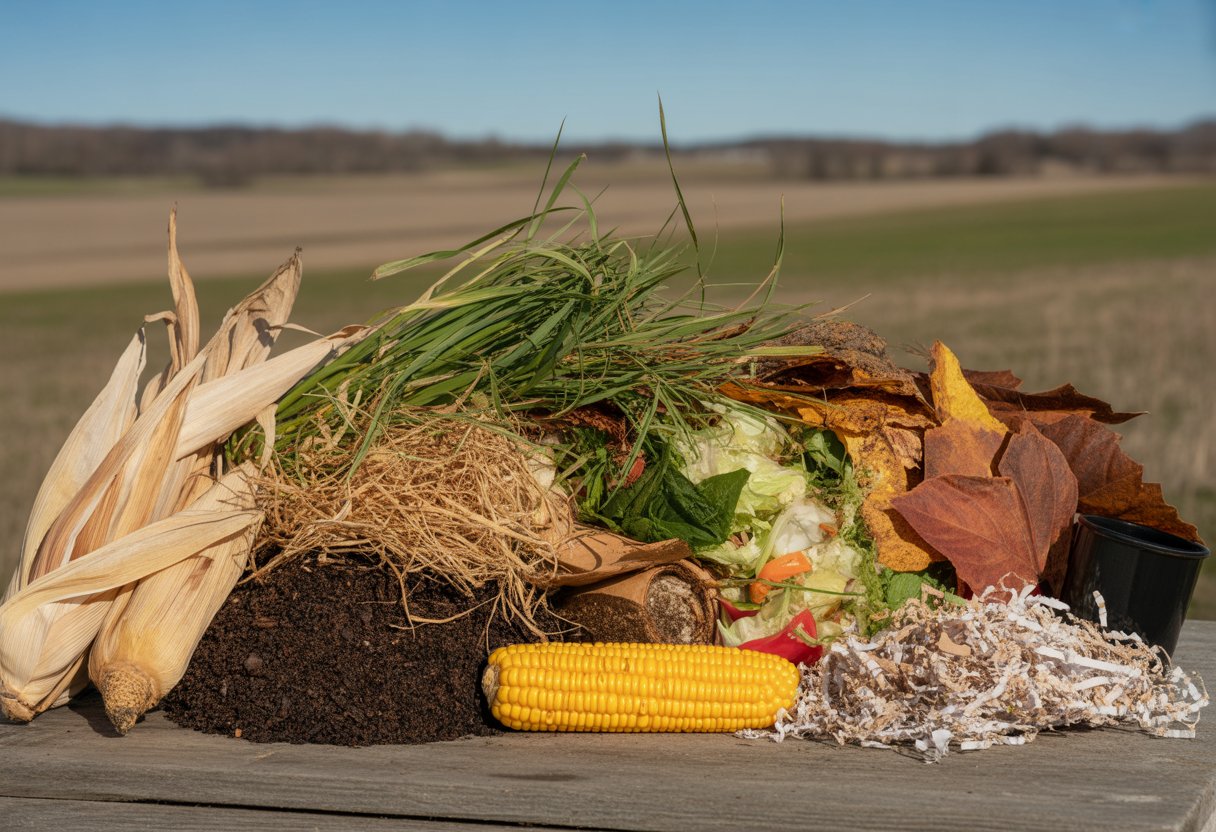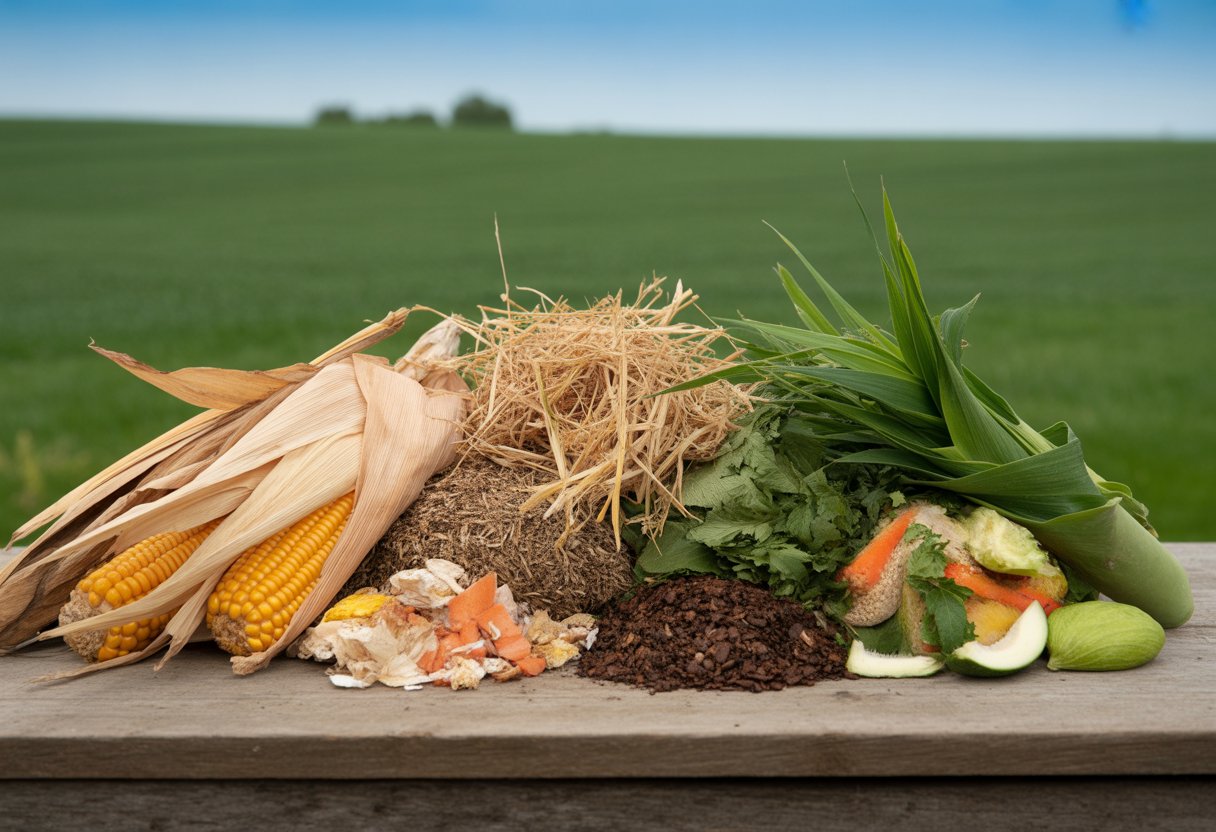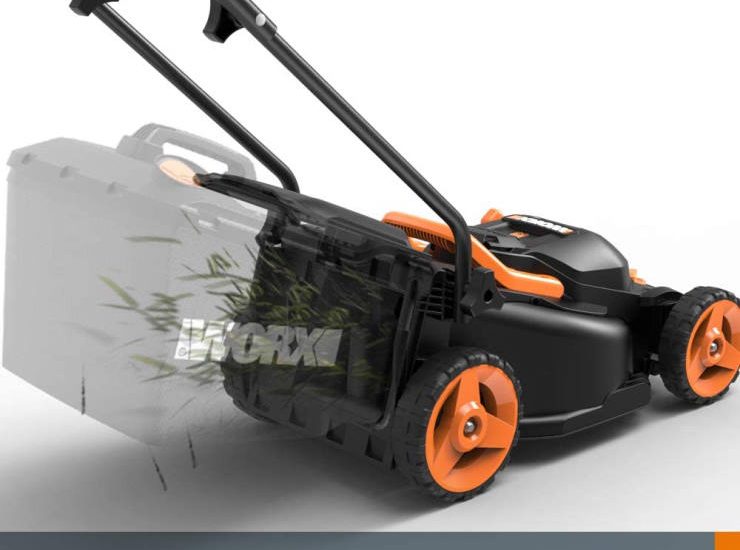Best Compost Materials for North Dakota: Effective Choices for Healthy Soil
Composting in North Dakota calls for materials that actually work with its climate and soil. The best compost materials include yard waste like grass clippings and leaves, kitchen scraps such as vegetable peels and coffee grounds, and local agricultural residues. These give you a solid carbon and nitrogen balance, which is what you want for good decomposition.

North Dakota gets cold winters and stretches of dry weather, so materials that hang on to moisture and break down a bit slower help keep compost quality steady through the year. If you can get manure from local farms or straw, those boost nutrients and improve the structure of your pile.
Essential Compost Materials for North Dakota

The climate and farming landscape in North Dakota really shape what compost materials work best. Picking the right organic stuff keeps composting active and helps your soil, which is a big deal for gardeners and farmers here.
Grass Clippings
Grass clippings bring a solid dose of nitrogen to compost in North Dakota. They break down quickly and boost the pile’s nitrogen, which really speeds things up.
Use grass clippings that don’t have weed seeds or chemicals. That way, you avoid adding anything you don’t want in your garden.
Mixing them with carbon-rich materials keeps the compost pile from getting soggy or smelly. Turning the pile regularly helps the microbes do their thing and keeps everything airy.
Since grass clippings are pretty moist, they’re especially useful during North Dakota’s dry spells in the growing season.
Leaves and Yard Waste
Leaves are your main carbon source, balancing out the nitrogen from things like grass clippings. In North Dakota, fall means lots of deciduous leaves, so you’ve got plenty to work with.
Chop or shred leaves before tossing them in the pile. That way, they break down quicker and don’t mat together, which can block airflow.
Yard waste like small twigs and plant trimmings helps add structure to the mix. Dry leaves are especially handy in the fall and early winter when you need to balance out wetter stuff.
If you combine leaves with manure or food scraps, you get a nice mix of nutrients that your soil will thank you for.
Manure from Local Livestock
Manure from cattle, horses, sheep, and poultry is packed with nitrogen and helpful microbes. It’s a great compost booster in North Dakota.
Always compost fresh manure thoroughly so you kill off pathogens and weed seeds. Mix it with carbon-rich things like straw or sawdust for a balanced pile.
Local manure brings more microbial diversity, which means your compost breaks down faster. Plus, using what’s nearby cuts waste and adds organic matter to gardens and farms.
Food Scraps
Food scraps add a bunch of nutrients, but you have to manage them so you don’t attract pests or get bad smells. Kitchens in North Dakota usually have veggie peels, fruit bits, coffee grounds, and eggshells.
Skip composting meat, dairy, or oily foods—they just cause problems. Cover food scraps with dry leaves or shredded paper, and turn the pile regularly to keep things balanced.
Food scraps bring moisture and nitrogen, which helps microbes stay active. Composting your food waste keeps it out of landfills and cycles nutrients back into your soil.
Specialized Materials to Improve North Dakota Compost

Some organic materials can really step up your compost game by balancing moisture, airflow, and nutrient content. They also help with structure and keep the breakdown process on track, especially with North Dakota’s unpredictable weather.
Straw and Hay
Straw and hay are classic bulking agents that add carbon. Straw, usually from cereal grains, works well because it doesn’t bring a lot of nutrients but adds structure and air pockets.
Hay’s got more nutrients, but you have to watch out for weed seeds or leftover pesticides. Both break down slowly, keeping your carbon-to-nitrogen ratio in check.
In North Dakota, straw mulch is pretty common for protecting soil, so any leftovers can easily go in your compost.
Wood Chips and Sawdust
Wood chips and sawdust are high in carbon and help balance out green, nitrogen-rich materials. Wood chips break down slowly and keep the pile from getting too packed.
Sawdust is finer and can clump if you add too much. It also needs more nitrogen to break down right.
Both help soak up extra moisture, which is handy during wetter times. Stick to untreated, pesticide-free wood to keep things clean.
Make sure to turn the pile often if you’re using these, so everything stays aerated.
Shredded Newspaper
Shredded newspaper is an easy, cheap carbon source. It soaks up moisture but needs to be mixed well with green stuff so it doesn’t clump.
Most newspaper ink these days is soy-based and safe for composting. Newspaper helps keep the pile’s structure and moisture balanced.
Layer or mix it with food scraps or yard waste for even breakdown. Don’t just pile it on top and hope for the best.
Adapting Compost Materials to North Dakota’s Climate

North Dakota’s cold winters and shifting moisture levels make composting a bit of a puzzle. You’ve got to tweak your approach so organic matter breaks down well and your soil health actually improves.
Cold Weather Composting Strategies
When temps drop below freezing, composting slows way down. If you want microbes to keep working, build piles at least 3 feet high and wide so they can hold onto heat.
Toss in high-nitrogen materials like grass clippings or manure to help keep the pile warm. Covering the pile with insulated tarps or straw bales shields it from frost and wind.
Turn the pile less often in winter to trap heat and moisture. A compost thermometer helps you keep an eye on the temperature—aim for above 110°F if you can, even when it’s cold out.
Managing Moisture Levels
Moisture matters a lot for microbial activity, but it shifts with North Dakota’s seasons.
Ideally, compost should feel like a wrung-out sponge—moist, not soggy.
Rain and snow can soak your compost pile, creating anaerobic spots that slow everything down and start to smell. Try using covers or just putting your compost somewhere that drains well to dodge that mess.
In dry spells, you’ll need to water regularly to keep things damp enough. Tossing in dry, carbon-rich stuff like shredded leaves helps balance out all the wet, nitrogen-heavy scraps and keeps moisture where you want it.
| Moisture Tips | Compost Effect |
|---|---|
| Too wet | Slow decomposition, bad odors |
| Too dry | Microbial activity halts |
| Balanced moisture | Efficient breakdown, healthy soil |


